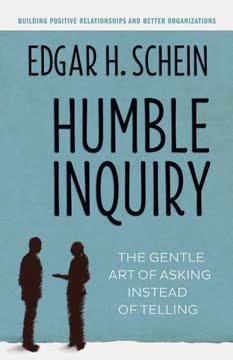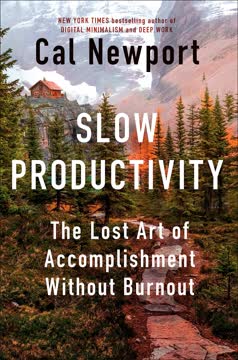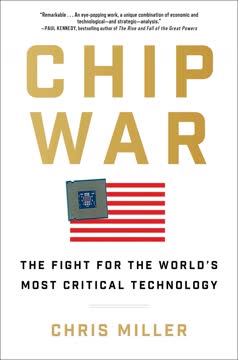つの重要なポイント
1. モチベーションは歪んでいる:一般的な神話を打ち破り、進捗に焦点を当てる
物事は歪む。
モチベーションに関する誤解が多い。 ポジティブシンキングの力や報酬の効果など、モチベーションに関する多くの一般的な信念は誇張されているか、誤解されていることが多い。これらの神話は、効果のない戦略や失望する結果を招く可能性がある。
成功ではなく進捗に焦点を当てる。 最終目標に固執したり、感動的なスピーチに頼るのではなく、着実な進捗を支える構造を作ることに集中する。このアプローチは、職場での進捗感が最も強力なモチベーターであることを示す研究と一致している。
- 神話を打ち破る:
- ポジティブシンキングだけでは成功しない
- 報酬は時に内発的動機を損なうことがある
- 目標設定は特に複雑なタスクには効果的でないことがある
- 進捗を強調する:
- 進捗の目に見えるマーカーを作る
- 小さな成功を祝う
- 頻繁なフィードバックを提供する作業プロセスを設計する
2. 変化は難しいが必要:挑戦と不快感を受け入れる
現実は壊れている。ゲームデザイナーがそれを修正できる。
変化は避けられず、必要である。 今日の急速に進化する世界では、組織や個人は関連性を保ち、競争力を維持するために適応しなければならない。しかし、変化はしばしば不快感や抵抗を伴い、それを認識し対処する必要がある。
ゲームデザイナーのように変化に取り組む。 変化の取り組みをよく設計されたゲームとして捉えることで、プロセスをより魅力的で恐れを感じさせないものにすることができる。このアプローチは、構造化された環境内で挑戦に取り組み、進捗を求める自然な傾向を活用する。
- よく設計された変化の特徴:
- 明確な目標
- 管理可能な挑戦
- 頻繁なフィードバック
- 目に見える進捗マーカー
- 習熟の機会
- ゲームのようなアプローチの利点:
- エンゲージメントの向上
- 抵抗の減少
- 問題解決能力の向上
- 協力の改善
3. 大きなモチベーションギャップ:現在の状態と望ましい状態の間のギャップを埋める
すべての進捗、成長、変化はこのギャップの中に存在する。
モチベーションギャップを理解する。 現在の状態と望ましい状態の間の空間は、モチベーションと進捗の温床である。このギャップは建設的な不満を生み出し、それを変化の推進力として活用できる。
ギャップを埋める橋を設計する。 モチベーションを維持するためには、ギャップを越える旅をより管理しやすく、報われるものにする構造を作る必要がある。これには、大きな目標を小さな達成可能なマイルストーンに分解し、途中で明確なフィードバックを提供することが含まれる。
- モチベーションギャップの要素:
- 現在の状態(今いる場所)
- 望ましい状態(行きたい場所)
- その間の旅(変化のプロセス)
- ギャップを埋めるための戦略:
- 近接目標を設定する
- 目に見える進捗マーカーを作る
- 頻繁なフィードバックを提供する
- 小さな成功を祝う
- 挑戦を調整してフローを維持する
4. すべてのゲームチェンジングハックの根源:進捗を見える化する
進捗を見える化する。
可視性はモチベーションの鍵である。 人々が自分の努力がどのように進捗に貢献しているかを明確に見ることができると、エンゲージメントとモチベーションが高まる。この原則は、個々のタスクにも組織の取り組みにも適用される。
進捗の可視化を設計する。 進捗を追跡し理解しやすくするシステムやツールを作る。これはシンプルなチェックリストから、より複雑なプロジェクト管理ソフトウェアまで様々だが、重要なのは進捗が一貫して明確に伝えられることだ。
- 進捗を見える化する方法:
- 進捗バーやチャートを使用する
- 定期的なチェックインやスタンドアップミーティングを実施する
- プロジェクトの進捗を公に表示する
- リアルタイムで進捗を追跡するデジタルツールを活用する
- 進捗の可視化の利点:
- モチベーションの向上
- 重要なタスクへの集中力の向上
- 達成感の向上
- チームの整合性の向上
5. ゲームに頭を入れる:ゲームデザインの力を理解する
ゲームは目標、ルール、フィードバックの相互作用に過ぎない。
ゲームは単なる娯楽ではない。 ゲームデザインの原則は、仕事や生活に適用して、より魅力的でモチベーションを高める経験を作り出すことができる。これらの原則を理解することで、挑戦や変化に対するアプローチを再設計することができる。
ゲームデザインの要素を仕事に適用する。 明確な目標、明確に定義されたルール、頻繁なフィードバックを仕事のプロセスに組み込むことで、より魅力的で生産的な環境を作り出すことができる。このアプローチは、進捗を求め、挑戦を克服する自然な傾向を活用する。
- ゲームデザインの主要要素:
- 目標:目指すべき明確な目的
- ルール:行動や戦略を形作る制約
- フィードバック:進捗やパフォーマンスに関する情報
- 仕事におけるゲーム的デザインの利点:
- エンゲージメントの向上
- 問題解決能力の向上
- 協力の改善
- 挫折に対する回復力の向上
6. ゲームチェンジャーモデル:目標、ルール、フィードバックを統合する
ゲームチェンジャーとは、ゲームに大きな違いをもたらす新たに導入された要素である。
ゲームチェンジャーモデルを理解する。 このフレームワークは、モチベーションとゲームデザインの主要要素を統合して、仕事や変化に対するより効果的なアプローチを作り出す。既存のプロセスを分析し改善するための構造化された方法を提供する。
モデルを課題に適用する。 目標、ルール、フィードバックを体系的に検討し調整することで、改善の機会を特定し、より魅力的でモチベーションを高める経験を作り出すことができる。
- ゲームチェンジャーモデルの構成要素:
- スパーク:核心となる目標や意図
- アクションレイヤー:具体的で実行可能なステップ
- プロジェクトレイヤー:行動の組織化と順序付け
- ゲームレイヤー:モチベーションデザイン要素
- ゲームチェンジャー:ゲームを調整するためのメタレベルの視点
- 適用プロセス:
- 現在の「ゲーム」(仕事のプロセスや変化の取り組み)を特定する
- モデルを使用してその構成要素を分析する
- 改善の余地を特定する
- 変更を実施し、結果を監視する
7. ゲームを向上させる:自己妨害を克服し、正しい質問をする
私たちは自分自身の邪魔をするのが非常に得意である。
自己妨害を認識し対処する。 多くの人は無意識のうちに、先延ばし、完璧主義、過剰なコミットメントなどを通じて自分の進捗を妨げている。これらのパターンを特定することが、それを克服するための第一歩である。
正しい質問をしてゲームを改善する。 目標、ルール、フィードバックプロセスを体系的に検討することで、改善の余地を特定し、課題に対するより良いアプローチを設計することができる。
- 一般的な自己妨害の形態:
- 先延ばし
- 完璧主義
- 過剰なコミットメント
- 「忙しすぎて」進捗がない
- 環境の言い訳
- 問うべき重要な質問:
- 目標:それは明確で、意味があり、適切に挑戦的か?
- ルール:それは進捗を支援し、自律性を許容するか?
- フィードバック:進捗は見える化され、頻繁に伝えられているか?
8. ゲームを変える:ミッション、クエスト、儀式を実施する
方向を変えなければ、今向かっている場所にたどり着くかもしれない。
仕事をミッションやクエストとして設計する。 仕事をミッション(明確な目標)やクエスト(探索的な挑戦)として捉えることで、より魅力的で意味のあるものにすることができる。このアプローチは、構造と柔軟性の両方を提供する。
変化を支える儀式を確立する。 定期的な実践やルーチンは、望ましい行動を強化し、進捗感を生み出すことができる。これらの儀式は、毎日のスタンドアップミーティングから四半期ごとのレビューセッションまで様々である。
- ミッションとクエストの特徴:
- ミッション:明確な目標、定義された道筋
- クエスト:探索的な挑戦、学習の重視
- 効果的な儀式の例:
- 毎日のスタンドアップミーティング(7-12分)
- 週次の進捗レビュー
- 四半期ごとのプロジェクト計画セッション
- 年次のカルチャーブック作成(Zapposのように)
- このアプローチの利点:
- エンゲージメントの向上
- 組織の目標との整合性の向上
- 変化への適応力の向上
- チームの結束力の強化
最終更新日:
FAQ
What's "The Game Changer" about?
- Purpose of the book: "The Game Changer" by Jason Fox explores how to use the science of motivation combined with game design principles to influence behavior, shape culture, and drive progress in organizations.
- Core concept: The book introduces the idea of changing the "game" at work by tweaking goals, rules, and feedback to enhance motivation and productivity.
- Target audience: It is aimed at leaders, managers, and anyone interested in improving motivation and engagement in their teams or organizations.
- Practical application: The book provides strategies and models to implement these concepts in real-world scenarios, making work more engaging and effective.
Why should I read "The Game Changer"?
- Innovative approach: The book offers a fresh perspective on motivation by integrating game design principles, which is not commonly found in traditional management literature.
- Evidence-based insights: It debunks common motivational myths and provides evidence-based strategies to enhance motivation and productivity.
- Practical tools: Readers gain access to practical tools and models that can be directly applied to improve workplace dynamics and culture.
- Broader impact: Understanding these concepts can lead to significant improvements in personal productivity and organizational success.
What are the key takeaways of "The Game Changer"?
- Progress principle: Making progress visible is crucial for sustaining motivation and engagement in any task or project.
- Game design elements: Goals, rules, and feedback are the core components of any game and can be applied to work to enhance motivation.
- Intrinsic motivation: Purpose, mastery, and autonomy are essential for fostering intrinsic motivation, which is more sustainable than extrinsic rewards.
- Iterative approach: Change and progress require a continuous process of experimentation and iteration, rather than one-time solutions.
How does Jason Fox define a "game changer"?
- Definition: A "game changer" is a newly introduced element or factor that significantly alters an existing situation or activity.
- Role in motivation: It involves changing the parameters of work to make it more engaging and motivating.
- Application: By identifying and implementing game-changing elements, organizations can shift behavior and culture effectively.
- Outcome: The goal is to create a work environment where progress and motivation are inherent, leading to better outcomes.
What is the "Progress Principle" in "The Game Changer"?
- Core idea: The Progress Principle states that a clear sense of progress is the most significant factor in motivating people at work.
- Feedback loops: Reducing the latency between effort and feedback enhances motivation by making progress visible.
- Practical application: Organizations should focus on creating structures that provide immediate and meaningful feedback to sustain motivation.
- Impact on work: When employees see how their efforts contribute to progress, they are more likely to remain engaged and motivated.
How does "The Game Changer" address self-sabotage?
- Common forms: The book identifies procrastination, perfectionism, and overcommitment as common forms of self-sabotage.
- Strategies to overcome: It suggests making progress visible, setting clear goals, and creating supportive structures to mitigate self-sabotage.
- Role of visibility: By enhancing the visibility of progress, individuals can better manage their time and focus on what truly matters.
- Behavioral change: The book emphasizes changing the game to alter behavior, rather than trying to change motivation directly.
What are the myths about games discussed in "The Game Changer"?
- Myth #1: Games are only for young people or those avoiding work. The book debunks this by showing that games are a universal and engaging form of work.
- Myth #2: People play games just to win. In reality, games are about mastering challenges and experiencing progress.
- Myth #3: Games are an escape from hard work. The book argues that well-designed games are challenging work that people willingly engage in.
- Broader understanding: By understanding these myths, readers can better appreciate the role of game design in motivation.
How does "The Game Changer" suggest using game design in work?
- Core elements: The book emphasizes using goals, rules, and feedback to structure work like a game.
- Purpose and mastery: Aligning work with purpose and mastery enhances intrinsic motivation.
- Iterative design: Work should be designed iteratively, allowing for continuous improvement and adaptation.
- Practical application: By applying these principles, organizations can create more engaging and motivating work environments.
What is the "Game Changer Model"?
- Components: The model includes layers of action, project, and game, each contributing to motivation and progress.
- Action layer: Focuses on translating goals into specific, actionable steps.
- Project layer: Organizes actions into coherent projects that align with broader goals.
- Game layer: Involves tweaking goals, rules, and feedback to enhance motivation and engagement.
How does "The Game Changer" propose to shift organizational culture?
- Behavioral focus: Culture change is achieved by influencing behaviors through motivation strategy and design.
- Structures and rituals: Establishing effective structures and rituals can reinforce desired behaviors and cultural norms.
- Iterative process: Culture change is an ongoing process that requires continuous experimentation and adaptation.
- Role of leadership: Leaders play a crucial role in shaping culture by modeling behaviors and setting the tone for change.
What are the best quotes from "The Game Changer" and what do they mean?
- "Make progress visible." This quote emphasizes the importance of feedback and visibility in sustaining motivation.
- "Success is simply a failure to fail." It highlights the iterative nature of progress and the value of learning from failure.
- "We are all 100 per cent motivated, even when we are not." This challenges the notion of motivation as a fixed trait and suggests that behavior is a result of the environment.
- "The house always wins." It underscores the idea that games are designed to favor their creators, and by understanding this, we can design better work environments.
How can I apply the concepts from "The Game Changer" in my organization?
- Start with visibility: Implement systems that make progress and feedback visible to all team members.
- Design for motivation: Use game design principles to structure work in a way that enhances intrinsic motivation.
- Iterate and adapt: Continuously experiment with new strategies and adapt based on feedback and results.
- Focus on culture: Use structures, rituals, and artifacts to shape and reinforce the desired organizational culture.
レビュー
本書『The Game Changer』は賛否両論の評価を受けており、平均評価は3.91/5である。多くの読者は、ゲームデザインの原則を通じたモチベーションの革新的なアプローチを評価し、洞察力があり実用的だと感じている。著者の文体や組織行動の概念を統合した点を称賛する声もある。しかし、批評家たちは実践的な実装アドバイスが不足していると指摘し、既存の理論に頼りすぎていると批判する。内容が繰り返しであるか表面的だと感じる読者もいれば、職場のモチベーションやゲーミフィケーションに興味がある人にとっては必読書だと考える読者もいる。
Similar Books













